Internet speed is the rate an internet service provider can move internet traffic from and to the customer’s internet-enabled device. Knowing the internet speed of an internet connection is important because without knowing the speed, a user cannot plan the type of tasks that can be completed while on that internet connection. Knowing internet speeds is not just important for individuals but also businesses. Businesses have to calculate whether an internet connection is reliable enough for the required IT tasks and to access data quickly is also something that can only be done reliably by knowing internet speeds.

Hybrid working environments mean people need to have a sufficiently fast internet connection to get work done and attend Zoom calls while streaming content on another device. Testing whether an internet connection is fast enough to take the workload requires good speed testing tools. Any internet speed test site that aims to be the best among the available speed test tools needs to offer more statistics (related to the user’s internet connection), show fewer ads (so that the final result is not affected by ads loading elsewhere on the page) and not require more than a couple of clicks.
The 8 best internet speed test sites are given below.
- Ookla
- M-Lab Internet Speed Test
- Fast.com
- SecurityGladiators Internet Speed Test
- Speedof.me
- Testmy.net
- Xfinity Speed Test
- Internet Health Test
Table of Contents
1. Ookla
Ookla is one of the most complete and popular speed testing sites on the internet. Ookla’s site provides all the standard tools necessary to reliably test an internet connection’s speed.
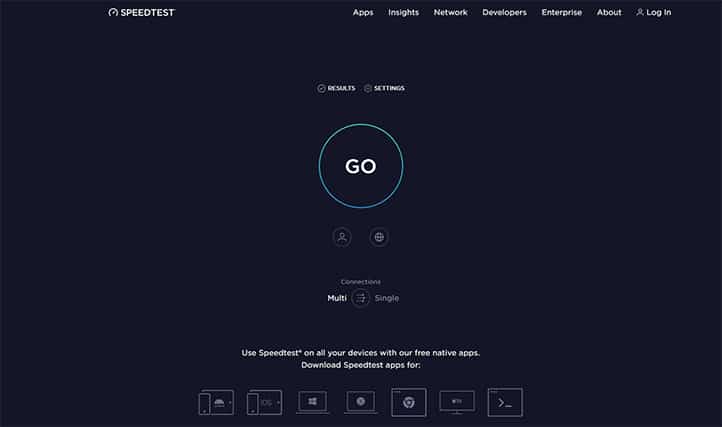
The main usage of Ookla is to know the internet speeds of any connection. And the primary way to use Ookla is through the official website or the Android/iOS app.
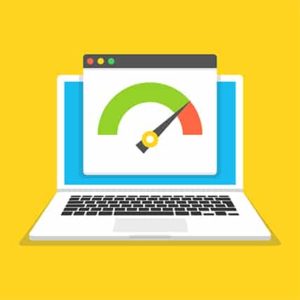
The Ookla speed test site has a strong reputation for accurate and consistent results. And that’s for good reason since Ookla is one of the earliest working speed testing websites on the web. The factors Ookla speed test takes into consideration and presents to the user include download speed, upload speed, ping, location, the server used for testing purposes and the speed of the internet connection in question relative to other speed test results. Depending on the test the user wants to run, Ookla can add more factors into calculating internet speed, such as video streaming.
To test internet speed via Ookla, users have two options. Either go to the official website of Ookla for speed testing (which is www.speedtest.net) or download the official Ookla app on platforms such as Android, iOS, Windows, macOS, Android TV, command line and/or Chrome extension. Once the best internet speed app is set up (or the official website has successfully opened) users need to click on the button that says “Go.” Depending on the speed of the internet connection and the ping, Ookla may take several seconds to display the results of the test. Users should wait for the download and upload tests to complete to know the final internet speed. For more reliability, running several tests one after the other, either with the same server or a different server, is helpful.
Ookla is considered as the best internet speed test tool because the service shows sufficient information regarding the user’s internet connection and requires a single click to launch the speed test.
2. M-Lab Internet Speed Test
M-Lab Internet Speed Test is a speed testing tool that makes measuring internet speed as simple as possible. There is no need to go to any website or download/install a specific tool to measure the speed of an internet connection. The M-Lab Internet Speed Test tool works from the Google search engine results page. The main usage of the M-Lab Internet Speed Test is to get an accurate speed of an internet connection’s download and upload. In terms of accuracy, M-Lab is considered to offer some of the most accurate speed test results. The fact that M-Lab has a partnership with Google gives more credence to the results of the service’s speed test results.
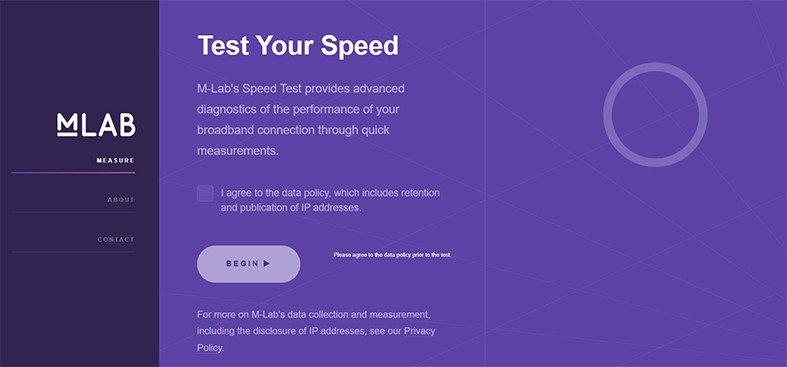
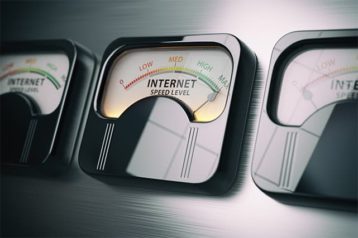
To use the M-Lab Internet Speed Test, users first need to go to www.google.com and then search for the term “internet speed test.” Once done, the Google search results page should show a message box right at the top with the heading “Internet Speed Test.” Just below towards the right-hand side should be a button with a blue background and text “Run speed test.” Users need to click that blue button to start the test. Once the test starts, users may need to wait for a bit before M-Lab is able to run both download and upload tests. After both tests are finished, M-Lab will show the results along with the latency measured and the server used in a new window which should slide up automatically.
The M-Lab Internet Speed Test is good because the user is shown sufficient information about the internet connection in question, the test is easily accessible via the Google search engine and does not show any ads.
3. Fast.com
Fast.com is a speed test tool that allows users to see how fast an internet connection is. The main usage of Fast.com is to measure download and upload speeds. Users can access Fast.com speed test tools either via the official website or dedicated iOS/Android apps. As far as accuracy is concerned, Fast.com is a fairly accurate speed test site. The company behind the fast.com internet speed tool is Netflix, which, just as with M-Labs, lends more credibility to the speed test results obtained via the service.
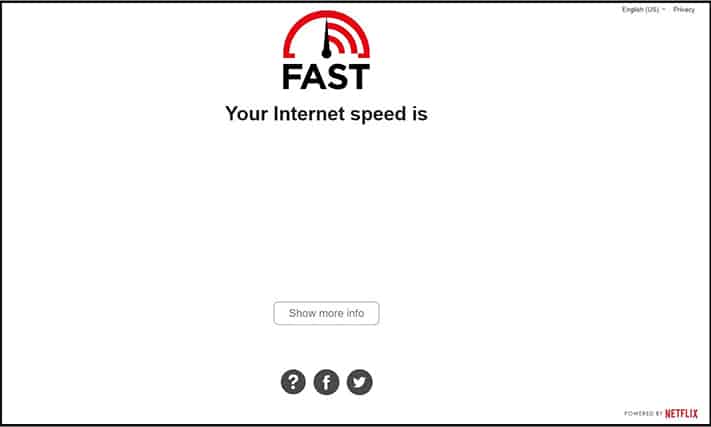
To test internet speed via the Netflix-powered Fast.com service, users can either download the app for iOS and Android and then launch the app to automatically start the test or go to www.fast.com and automatically start the test. Once the test is finished, Fast.com will only show the download speed results. Click the “Show more info” button to see more details such as upload speed and latency stats.
Fast.com is one of the best speed test sites because of no ads, single-click test launch facility and detailed information about the user’s internet connection.
4. SecurityGladiators Internet Speed Test
The SecurityGladiators Internet Speed Test tool is also a great way to measure internet speed and view cool new statistics. The main aim and usage of the SecurityGladiators Internet Speed Test tool is to allow users to know internet speed without having to install an app or go to a specific website. Users who take advantage of the SecurityGladiators Internet Speed Test to measure internet speed benefit from high accuracy and reliability. And that’s because the SecurityGladiators Internet Speed test is powered by Ookla and Speedtest.
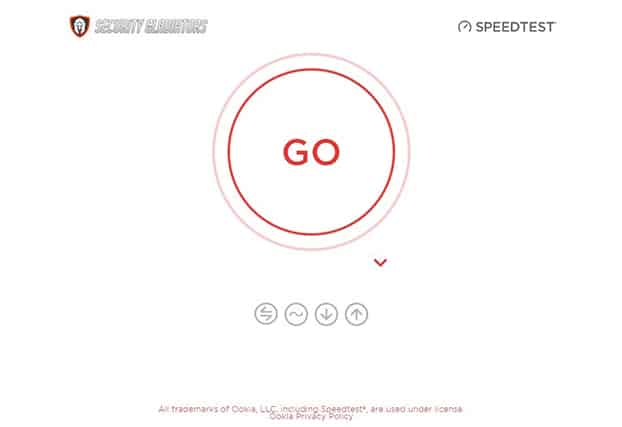
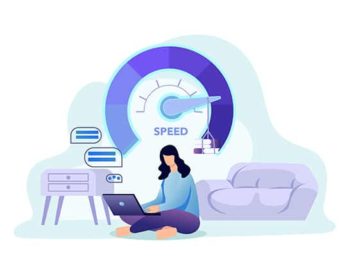
The SecurityGladiators Internet Speed Test only requires the user to visit www.securitygladiators.com/internet-speed-test and then click on the button “Go.” Once done, the site will automatically calculate the internet connection speed and show the results without requiring the user to go to another page.
Testing for accurate internet speed results via SecurityGladiators is recommended because SecurityGladiators’ speed test tool is powered by Ookla, shows more information than the original Ookla test, allows the user to run the test with a single click and does not show ads.
5. Speedof.me
Speedof.me is another popular and reputable internet speed test site that aims to provide quick speed test results. This internet speed site differs from other speed testing tools. Speedof.me aims to offer a number that reflects the downloading speed and browsing experience rather than just pure statistics. The main usage of a service like Speedof.me is to measure internet speed accurately, but do so with as few resource requirements as possible.
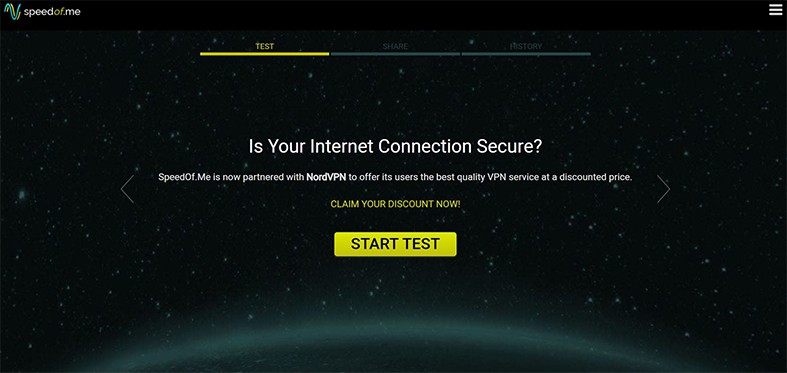
Speedof.me, when compared to other speed test sites, is very accurate and one of the few competitors of big-names such as Ookla and Fast.com. Speedof.me achieves accurate speed test results by varying the size of the files that are downloaded while trying to measure the speed of an internet connection. Because of the way Speedof.me measures speed, the service may give a lower speed number than some of the other speed test sites mentioned on this list.
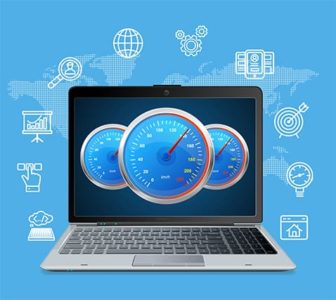
Factors that Speedof.me takes into consideration while coming up with a reliable internet speed number include download speed, upload speed, latency, server location, IP address and real-time information on the previously mentioned factors (while the test file gets downloaded and uploaded).
In order to test for internet speed, users only have to go to www.speedof.me and then click on the button that says “GO.” Just like with all the other speed test sites, Speedof.me will begin the speed testing process and will show the progress with help from a graph (other services use a speed-meter).
Speedof.me is one of the best internet speed test sites as the service offers a one-click test launch button and just one or two ads.
6. Testmy.net
Testmy.net may not be the most popular speed test around, but the service is definitely one of the best. Testmy.net provides ample information to users about an internet connection. The main usage of Testmy.net is to measure internet speed and compare that speed with other users who have used the same service before.
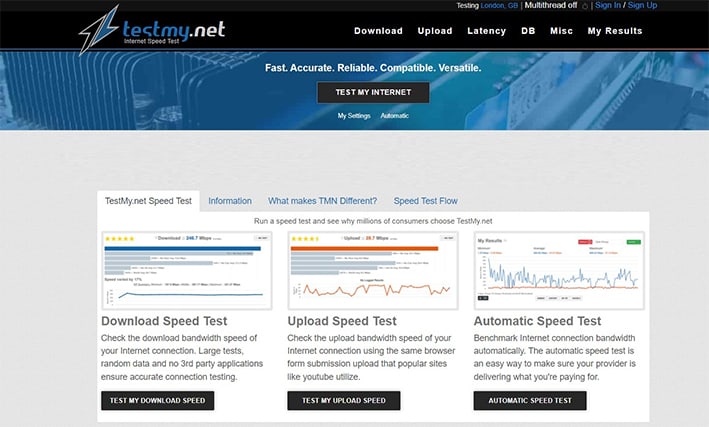
While Testmy.net is an accurate speed testing site, the results may or may not be accurate for the individual user, as there are several ways the service allows a speed test to be carried out. If the user is not fully confident of which test to run, the results may give the wrong impression. Testmy.net does mention on the official website that the service takes a different approach to test for internet speed for more accurate results. For example, Textmy.net mentions that the service has dedicated and centralized servers with connectivity to over 25 tier1 bandwidth providers. This allows the service to offer more accurate results to users.

To use testmy.net, users first have to go to the official website which is www.testmy.net. Then users have to click on the button that says “Test My Internet.” Testmy.net will show four additional buttons labeled “Download”, “Upload”, “Combined” and “Latency.” For most users, the “Download” button should be enough. Upon a click, Testmy.net will carry out the necessary procedures and then output a download speed number. The service automatically compares the user’s internet speed with other metrics such as average U.S. speed, average host speed and world average.
Apart from the top “Test My Internet” button, there are also three additional buttons for testing specific parts of an internet connection. Unlike before, the service will also offer up more options such as the size of the download to be used and the location of the server.
Testmy.net is considered one of the best internet speed test sites because of how accurate the results are, lack of ads and lots of information about the user’s internet connection.
7. Xfinity Speed Test
Xfinity Speed Test is a lesser-known speed testing site but is equally reliable. As with any other good speed test tool, the Xfinity Speed Test site’s main usage comes from users checking internet connection speed.
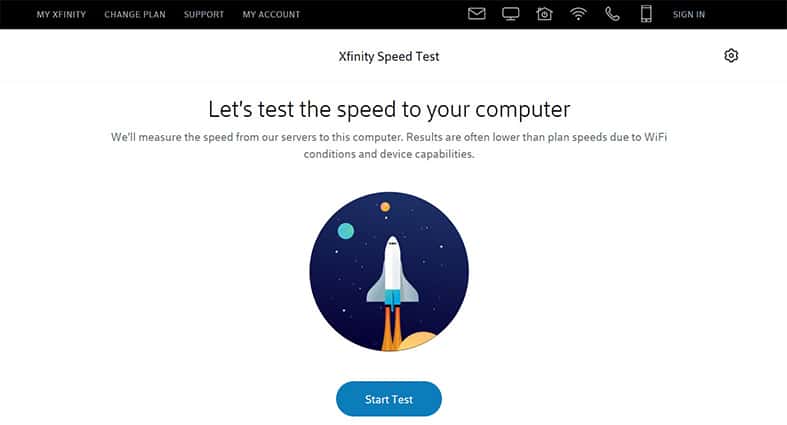
The Xfinity Speed Test tool is accurate since the interface is mostly minimal and there are no ads to potentially give inaccurate speed test results. The availability of advanced options further solidifies the accuracy of Xfinity speed tests.

To use the Xfinity Speed Test tool, users first have to go to the official website via speedtest.xfinity.com. Once there, users should click on the button below the spaceship icon that says “Start Test.” Upon clicking the “Start Test” button (colored blue), the service will carry out all the tests and then show the results. That is in stark contrast to some of the other options on this list where users have to click more buttons to actually launch the speed test and get a number. To view more information, users have to click the “Show More” button right beside where Xfinity mentions the download speed number.
Xfinity Speed Test gets on this list of best internet speed test tools because of lack of ads, sufficient internet connection information and one-click test launch button.
8. Internet Health Test
The Internet Health Test is a comprehensive online tool to not just measure internet connection speed but also several other metrics which indicate the health of an internet connection.
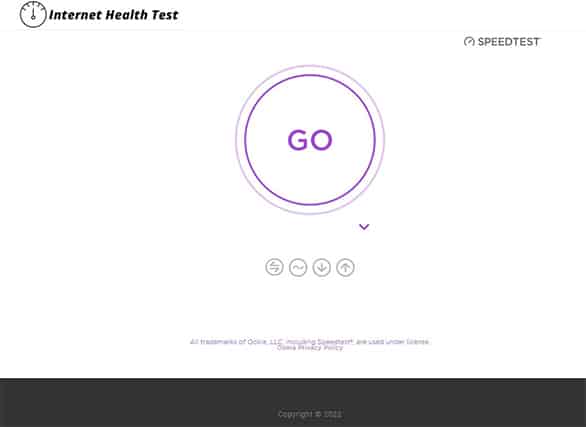
The Internet Health Test is a fairly accurate speed test site as the service takes advantage of the internet speed test offered by Ookla.

There is literally nothing on the official speed test page apart from the speed testing tool itself. That should help Internet Health Test offer more accuracy than services that serve lots of ads just beside the speed testing tool and thus dilute the results. The Internet Health Test may not yet have hundreds of millions of users logging in and checking internet speeds, but with enough good quality service, the speed test tool is bound to get there quickly.
The Internet Health Test takes into account the download speed, upload speed, ping, server location from where to download and upload the test file, server location from where the user wants to run the test and jitters.
To use the Internet Health Test, users first have to go to www.internethealthtest.org and then click on the button that says “Go”. Since there is nothing else on the page, once the button “Go” is clicked, the Internet Health Test will carry out and present all the tests automatically with an option of carrying out the test again. Overall, a very clean and minimalistic experience.
Internet Health Test shows zero-ads and offers more information than regular speed test sites while offering a single click launch button.
How does an Internet Speed Test Site Work?
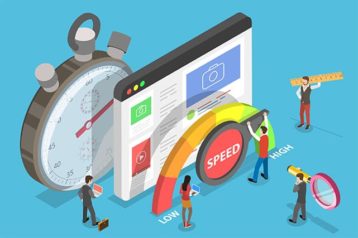
The main required action from the user in order to make a speed test site work is to click on the button that says “Go” or “Start Test” when on the official website of the speed test tool. Once that happens, the speed test site runs a multiple number of processes including determining the location of the user requesting the test, the location of the test server which is closest to the user and presenting the user with a choice to select a server.
When the user decides the server to be used, the speed test site usually sends a ping to the chosen server. A ping, in this context, can be considered a signal. The selected server then responds to the ping. The total time the signal takes to get a response from the test server back to the speed test’s server is recorded in milliseconds.
With a successful ping operation, the next step for the speed test service is to begin the download process. This is where most speed test services establish several connections to the test server and then attempt to download a test file (the size of the file is most randomized). During the downloading process, the speed test service measures the amount of network resources to get the data and the time required to download a tiny fragment of the test file/data.
When the speed test service recognizes the user’s internet connection can open up more connections and transfer even more data, the service does so. This is how most speed test services form an estimate of how much data transfer the user’s internet connection can handle. Then the speed test site calculates speed accordingly.

After a while, the speed test site is able to correctly calculate the number of connections the user’s internet connection can handle. At that point, the service downloads even more data for more time to increase the accuracy of the final results.
Everything mentioned above is what speed test sites do for determining an accurate number for latency and download speed. For upload speed, the speed test site reverses the process mentioned above. Data moves from the user’s device to the selected server instead of the other way around, like before.
What Factors can Impact Your Test Speed while Testing?
The factors that can impact the user’s test speed while testing are given below.

- Infrastructure: The infrastructure of the internet service provider that the user has subscribed to has perhaps the greatest impact on test speed while testing. Generally, the faster the internet connection package, the faster the test speed. However, sometimes internet service providers have too many customers doing resource-heavy tasks at the same time. This can cause the network infrastructure to overload and give low test speeds.
- Split Connections: If a user or other users in the same household run other applications while running a speed test, that can have a big impact on the test speed while testing. This is particularly true for heavy-duty tasks such as video streaming and torrenting.
- Internet Conditions: Network conditions at the time of the test can have an impact on test speed as well. If the user has turned off every device except for the one on which the speed test is to be carried out then that can affect test speed by a lot. Under normal network conditions with a couple of devices completing regular tasks and the test machine having web browsers opened in the background, the speed test result would be different. The user has to decide whether or not the speed test should be carried out in normal or ideal conditions.
- Time of the Day: As intuitive as that may sound, the time of the day the user runs a speed test can have a huge impact on the speed test result. An internet service provider may offer greater performance at night and throttle user connection during the day when most of the customer base is trying to consume as much bandwidth as possible. Testing an internet connection on the weekends also has the potential of impacting speed tests since people are more likely to be at home streaming videos when compared to weekdays.
- Number of Tests: A single test can give any speed result. But several tests done at the same time, one after the other, can also impact speed test results.
- Web Browser: The web browser used to perform the speed test can also impact speed test results. Apple Safari, Microsoft Edge, Mozilla Firefox, Google Chrome and Brave all have strengths and weaknesses that can alter speed test results. However, web browsers usually impact users with faster internet connections more.
- Speed Testing Service Used: Perhaps the most obvious factor that impacts speed test results is the speed test site or app used. Different speed test sites make use of different methods and parameters to measure internet speed. Speed test sites also have servers in different locations. All of that can have an impact on the end result. Apart from that, some speed test sites have malfunctioning test scripts. These can affect the final result as well.
- Location of the Test Server: The closer the test server is to the actual location of the server, the higher the speed number would be.
- Device Used: Modern users usually have two or more internet-enabled devices (including desktop computers, tablets, laptops, smartphones, streaming sticks and smart TVs). Each device is different in terms of cellular signal and WiFi capabilities. Carrying out a speed test on one device can give a different result from another device. Some devices simply do not have the capability to carry out speed tests properly to give an accurate result.
- Background Applications: Whether background applications are consuming lots of network resources or not, the mere fact that background applications can consume processing power impacts speed test results.
- Hardware Installed: If a user’s internet connection is fast enough, the onboard network card may not have the processing power to accommodate the maximum bandwidth the internet connection can provide. The hardware at the other end (the test server’s hardware) may also have insufficient processing power to handle all the data that the user’s internet connection can at once via multiple connections.
- Internet Connection Used by the Test Site: If the selected test server does not have enough bandwidth to accommodate the user’s maximum internet connection speed then that can impact the final speed number that pops up on the screen.
- Security Software: Some firewalls can block and/or slow down speed test sites.
- Equipment: Wireless repeaters, routers, switches, wires and any other equipment used to set up a network connection in a given household can impact speed tests. Some devices may have an incompatible firmware. Other devices may be overheating. As mentioned before, some devices simply may not have the capability to measure the maximum internet connection speed.
Are Internet Speed Test Sites Accurate?
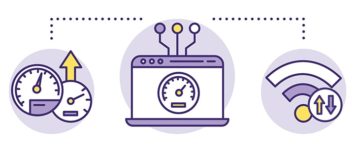
For the most part, yes. The average internet user does not have to think too much about the accuracy of a given speed test site. However, if measuring accurate speed is critical to an operation then different speed test sites have different pros and cons. Internet speed test sites carry out speed tests in a variety of different ways. The most popular methods deliver the most accurate results.
The type of speed test that is considered more accurate than others is based on HTML5. Some speed test sites make use of Adobe Flash and Java to run speed tests and those can have some inaccuracies while computing the final internet speed number. Speed test sites that rely on establishing multiple connections at the same time to transfer the maximum amount of data are prone to showing higher speed numbers. Some believe that such conditions do not give a practical number that would be useful under real-world network conditions. If the speed test site is running lots of ads on the page where the results of the speed test are to be shown, that can cause inaccurate results.
As mentioned before, if there are scripting errors on the speed test site then that can give inaccurate speed test results as well. Another factor that can affect the accuracy of the speed test results is the service offering the speed test. Speed test services offered by internet service providers are more prone to raising shown speeds than speed test services run by independent third-party sites.
Does Your Internet Provider Affect Your Internet Speed?

Yes, internet providers do affect an user’s internet speed. In fact, the primary factor affecting internet speed is the internet provider. The first way internet providers affect internet speed is by the speed tier assigned to a given customer. Almost all internet service providers affect user internet speed via packages. Different packages offer different speed tiers. After the speed tiers, internet providers affect internet speed via connection types. Some internet service providers use Fiber to the Node connections while others use fixed-line connections. There are other technologies available as well such as FTTP, HFC, ADSL and others.
Some internet providers force users to use a specific company-provided router. Making customers use an ISP-owned router is another factor in ISPs affecting internet speeds. Sometimes ISP-owned routers have faulty hardware that promotes slower internet speeds. This is an indirect way for ISPs to affect internet speeds. Some internet providers limit the number of devices that the user can connect via ethernet and WiFi connections which is another way of affecting internet speed for the user.
Finally, internet service providers sometimes throttle internet speed to keep data consumption under check. Other times internet providers mismanage the traffic present on a subsection of the network at a given time which affects internet speeds for everybody. Of course, the best internet providers try to affect the user’s internet speed positively. And that means not sharing the available bandwidth with too many users at the same time.
Does a VPN Affect Your Internet Speed?
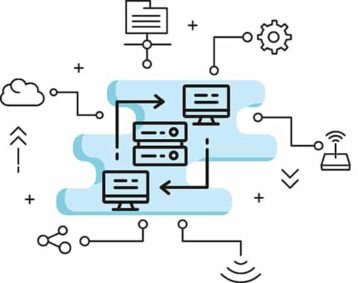
Yes, a VPN does affect internet speed. The main purpose of all VPN services is to encrypt user internet traffic. That makes user data safe and anonymous. Encrypting and decrypting internet data lowers overall internet performance especially if the VPN service in question is slow.
Latency is the biggest factor when talking about VPNs affecting internet speeds. As mentioned before, latency is the total time spent between a user making a request and the server responding. This time is measured in milliseconds. VPN services increase latency rates in most cases. And that’s because the physical distance between the user’s device and the website/app server increases. Because when connected to a VPN service, the user’s request first has to go to the VPN server and then to the CDN server of whichever website access is desired. Then data has to travel all the way back to the user’s device. That process takes a lot longer than when users visit a site without a VPN when the request can go directly to the CDN server of the desired website/app/service.
Another factor is server load. VPN services tend to affect internet speed because of different server loads. If 1,000 other users have connected to the same network as the first user then the server will not be able to manage all the requests quickly. That would lead to a slow internet connection. If there are fewer users on a given server then the slowdown would be much more bearable.
Note:
VPN effects on internet speed can be positive as well. As pointed out earlier, ISPs sometimes throttle user connections for certain types of traffic. VPN services can circumvent throttling measures and restore normal speeds for the user.What Mbps is Good for an Internet Connection?
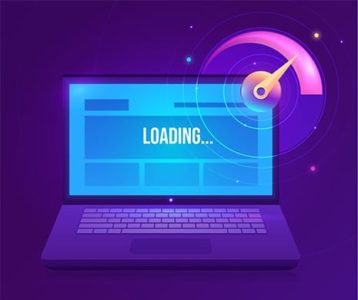
A good Mbps definition will change with the user’s needs and requirements. Different types of activities will require different Mbps internet connection for optimal performance and experience.
For web surfing: A good internet speed for simple web surfing should not require anything above 2 Mbps to 5 Mbps. That’s because activities such as simple browsing require very little bandwidth.
For video streaming: Users looking to stream video content may require a faster Mbps internet connection. For standard video streaming an internet connection from 10 Mbps-20 Mbps should suffice. Of course, the exact Mbps required for a good experience will depend on the quality of video streaming and the length of a streaming session. Streaming an SD video consumes around 12 MB of data and a 4K version of the same video consumes around 100 MB. This means users need to have an internet connection that’s seven to eight times faster for comfortable 4K streaming. In terms of numbers, Mbps comes to 60 Mbps – 150 Mbps. Getting such speeds is no longer a problem as internet service providers in the U.S. regularly offer internet connections close to 1,000 Mbps.
For Multiple Users: A good Mbps number for an internet connection should, again, change if there are multiple devices in the household or office. Going by what the Federal Communications Commission (FCC) recommends, 25 Mbps is required for four or more devices. 12 Mbps is required for two devices connected to the same network with heavy usage. If the network has four or more devices and all the devices want a comfortable experience while streaming 4K resolution video content, then a 100 Mbps internet connection is a good target to aim for.
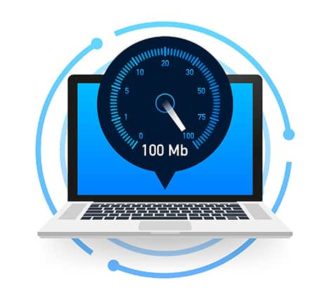
For Gaming: Gamers will have a higher set of Mbps requirements for an internet connection. Console manufacturers recommend that gamers should have at the very least 3 Mbps download speed and around 1 Mbps of upload speed. At such speeds, gamers will not be able to engage seriously in any online video game though. This is why internet service providers like AT&T say gamers need a 50 Mbps connection at the very least with 10 Mbps upload. Xfinity, another internet service provider, recommends internet connection over 300 Mbps for the best online gaming experience.
For Working From Home: Finally, people working from home also need a fast enough connection to not only upload and download documents but carry out team meetings via applications such as Zoom and Google Meet. According to Zoom, people working from home should aim for a 3 Mbps internet connection at the very least.
What’s the Difference between Bandwidth and Speed?

Bandwidth is defined as the maximum data that a given internet connection can transfer in a specified time. Internet speed is how quickly the data is transferred in real-world network conditions.
The easiest way to think about the internet speed vs. bandwidth problem is to think of bandwidth as the maximum data that the user’s device can push or pull from the internet. Internet speed is how fast the data can be pushed or pulled on the user’s device.
In many scenarios, the terms bandwidth and speed are interchangeable. And this is the reason why these two terms are misunderstood so often. Bandwidth, for the most part, is a theoretical number. On the other hand, internet speed is affected by the user’s hardware, software, the client’s hardware and software along with other possible compatibility issues.

